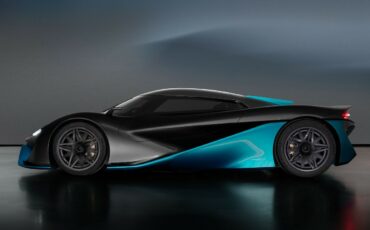
Tribute to Marcello Gandini with the Prototype Unveiled at the 1972 Geneva Motor Show: A Unique Model Exuding Elegance and Personality
From May 24 to 26, the BMW Group Classic and the Grand Hotel Villa d’Este will host the legendary Concorso d’Eleganza Villa d’Este. The most spectacular cars from different eras and around the world will compete in various categories to win prestigious awards. Among these are the coveted BMW Group Trophy awarded by the Jury, the traditional Coppa d’Oro based on public votes, the Design Award for concept cars and prototypes, and the special ASI Trophy for the best-preserved post-war vehicle.
The presence of the Automotoclub Storico Italiano (ASI) at this unmissable international event is highlighted by the display of the Citroën GS Camargue prototype from the ASI Bertone Collection. This car enriches the theme dedicated to Marcello Gandini – the recently deceased master of car design – set up in the park of Villa Erba on Saturday, May 25 and Sunday, May 26. Also at Villa Erba, as part of the “Amici & Automobili” event, the ASI-affiliated Veteran Car Club of Como will accompany the Camargue with a precious selection of historical cars from its members.
The Citroën Camargue was first presented at the Bertone stand at the 1972 Geneva Motor Show, where it was met with great enthusiasm from both the public and the press. Built on the innovative Citroën GS platform, which was launched in 1970, the Bertone coupé, styled by Marcello Gandini with the assistance of Marc Deschamps, retains the compact sedan’s layout and dimensions. The car features distinctive front and rear overhangs – the front being much more pronounced to enhance the car’s dynamic look. Lower and wider than the GS, the Camargue boasts a wedge-shaped front typical of Gandini’s style, contrasting with a truncated rear end supporting a broad, panoramic canopy with amber-tinted glass, paired with a chic metallic champagne-colored body. Despite its striking and original design, the Bertone proposal did not reach commercial production due to Citroën’s economic crisis during those years, which led to its merger with Peugeot in 1974.
The format of the Concorso d’Eleganza Villa d’Este includes a double location in Cernobbio, on the shores of Lake Como. On Saturday, May 25, the exclusive Hotel Villa d’Este’s park will host the display of all competing cars, the jury inspection, voting, parade, and the awarding of the Coppa d’Oro and special prizes. Simultaneously, Villa Erba will host the “Amici & Automobili” meeting with an exhibition of historical cars from clubs and enthusiasts.
On Sunday, May 26, the event will continue at Villa Erba with a festival celebrating automotive passion: all cars in the competition will be displayed in the park until the concluding parade, where the Design Award, class prizes, and honorable mentions will be awarded.


